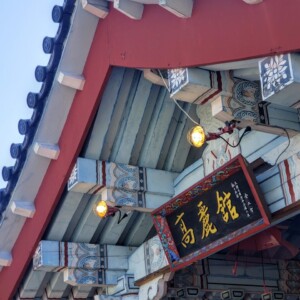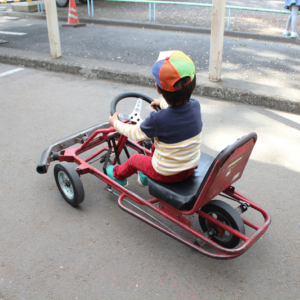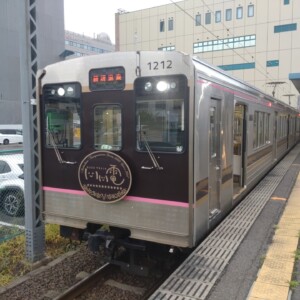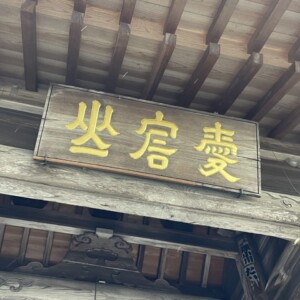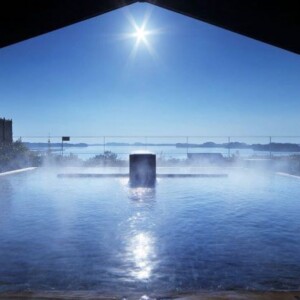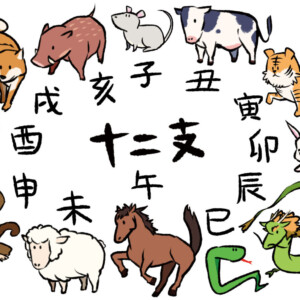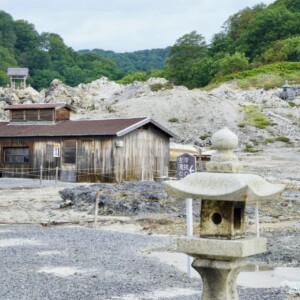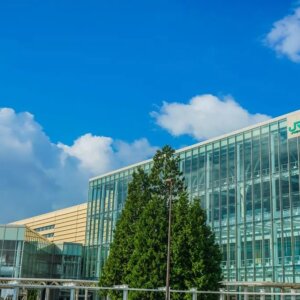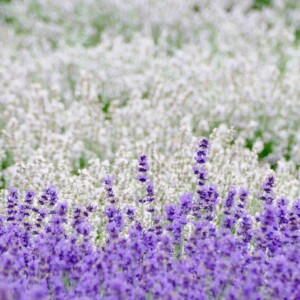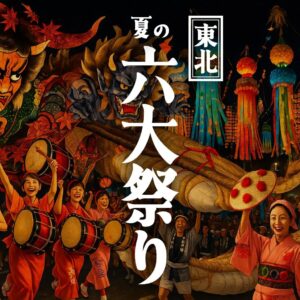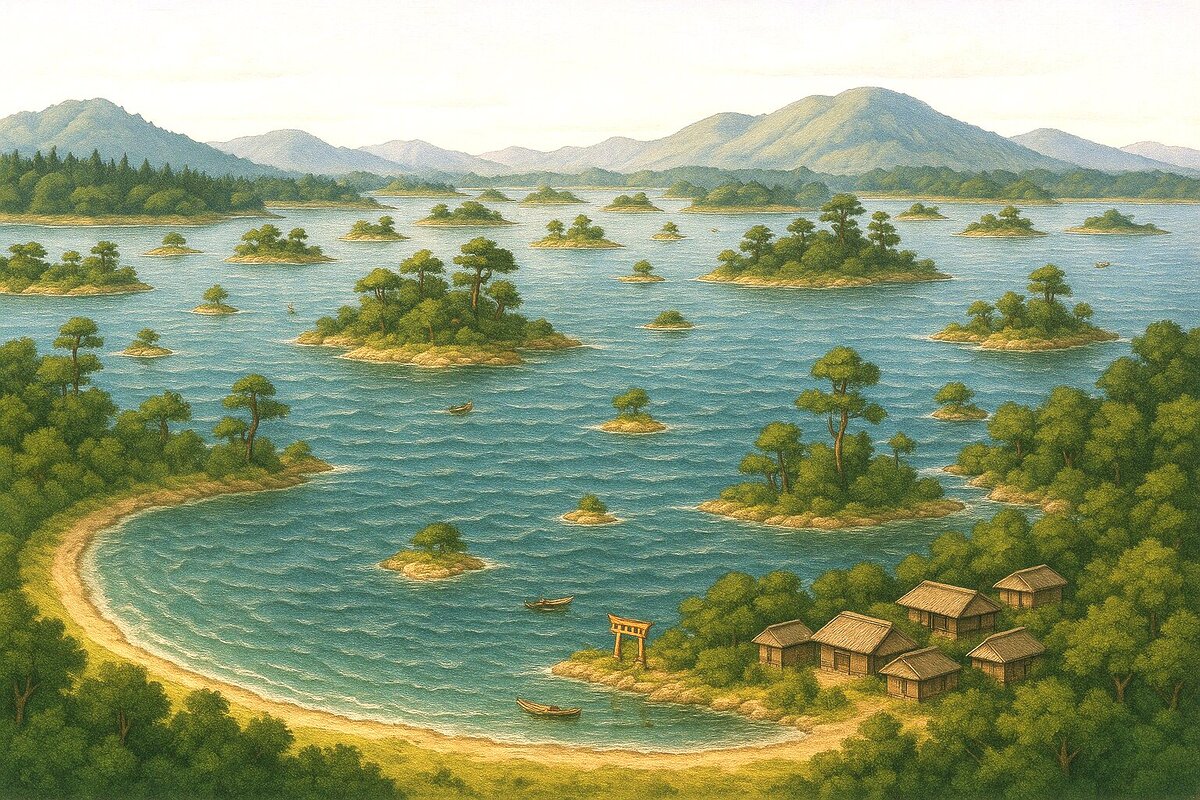
Matsuo Basho was impressed by the legendary landscape of Kujukushima, the elephant, which is not seen now [Nikaho City, Akita Prefecture]
table of contents
- 1 The scenery of Kurogata, which has been referred to as Matsushima since the Heian period.
- 2 Did Basho start because he wanted to see Zogata? “Oku no Hosomichi” travelogue
- 3 Passing through a difficult mountain pass in the heavy rain, we arrive at Izogata
- 4 Basho expressed the beauty of Kogata by comparing it to the unparalleled beauty of ancient China.
- 5 The Kurogata earthquake completely turned the sea into land in one day
- 6 Kakurin, who risked his life to protect the scenery of Kujukushima, Kuzugata
- 7 ``Nikaho City Local Museum'' exhibits historical materials and old drawings of Kurogata
Kisakatakujukushima, the Elephant-Gakutaku Island , is a scenic spot located on the Sea of Japan coast of Nikaho City, at the northern foot of Mt. Chokai, which rises to the border between Akita and Yamagata. Island-like mountains floating around the countryside, with rice fields spreading out, spreading beautiful landscapes like land-like versions of Matsushima (Matsushima Town, Miyagi Prefecture), which is considered one of Japan's three most scenic views.
Matsuo Basho and Sugae Masumi, travelers from the Edo period, were also impressed by the sight of the Ezogata and Kujukushima Island, and praised the beauty of their work. However, there is a big difference between the scenery we see now, the Elephant-Gata Kujukushima and the scenery seen by Basho and Masumi.

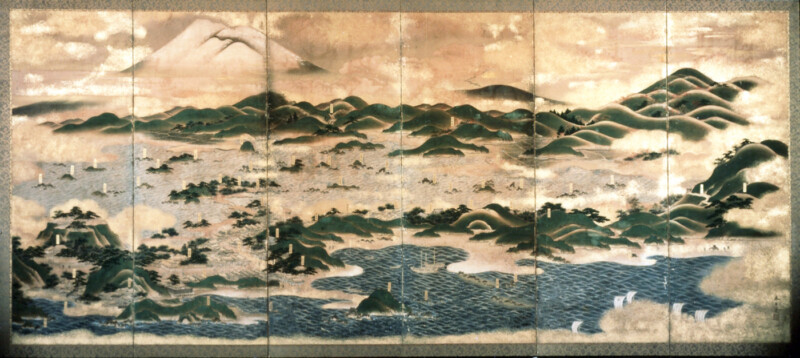
The scenery of Kurogata, which has been referred to as Matsushima since the Heian period.
The Ezogata Kujukushima Island was written in waka poetry by Noin, a poet who compiled the famous historical sites (poetry pillows) from all over Japan during the Heian period, and Saigyo, a monk from the same era, and was also known as a spectacular view of Tohoku during the Edo period.
What Basho and Masumi saw were small islands floating in the sea, similar to Matsushima. We can no longer see it, but fortunately, there are still pictures and other images drawn from the Edo period, and we can barely see them.
Did Basho start because he wanted to see Zogata? “Oku no Hosomichi” travelogue
left behind Oku no Hosomichi which focused on the Tohoku region
On March 27, 1689, when he was 46 years old, on March 27, 1689 (Lunar calendar/April 16 in the modern solar calendar/hereinafter referred to as "Okuno Hosodo" in the lunar calendar), he set out in Fukagawa (Fukagawa, Edogawa-ku, Tokyo) with his disciple Kawai Sora (Kawai Sora), and walked north from Senju (Senju, Adachi-ku, Tokyo).
I was impressed by Matsushima in Miyagi Prefecture, passing through Saitama, Tochigi, and Fukushima ( Matsushima and Matsushima , but the most likely theory is that the protagonist Taharabo is the student).
Later, in Hiraizumi (Hiroizumicho, Iwate Prefecture), where the Oshu Fujiwara clan was in great glory during the Heian period, he looked at the end of Minamoto Yoshitsune, stating " serenes of dreams by summer grass and soldiers, " he crossed the Ou Mountains and entered Yamagata Prefecture, the three mountains of Dewa (Gassan, Mt. Haguro, Mt. Yudono) and the mountain temples (Tateishiji = Risshakuji). At Yama-dera, he left behind a famous poem called The sound of cicadas smearing with the quiet rocks
After leaving Yamadera, the group descends the Mogami River by boat (" Mogami River is collected by May rain and is early ") and arrives at Sakata (Sakata City, Yamagata Prefecture), the largest port town of Tohoku, on the Sea of Japan side.
On June 13th, 1689 (Genroku 2), the group arrived in Sakata and set out on June 15th for Zoogata. "Okuno Hosodo" was a journey that allowed you to visit your destination more and more, but only Zogata was scheduled to leave Sakata and return to Sakata three days later.
It is said that Zōgata was the biggest destination of the "Okuno Hosodo" scene, which Basho really wanted to see.
Passing through a difficult mountain pass in the heavy rain, we arrive at Izogata
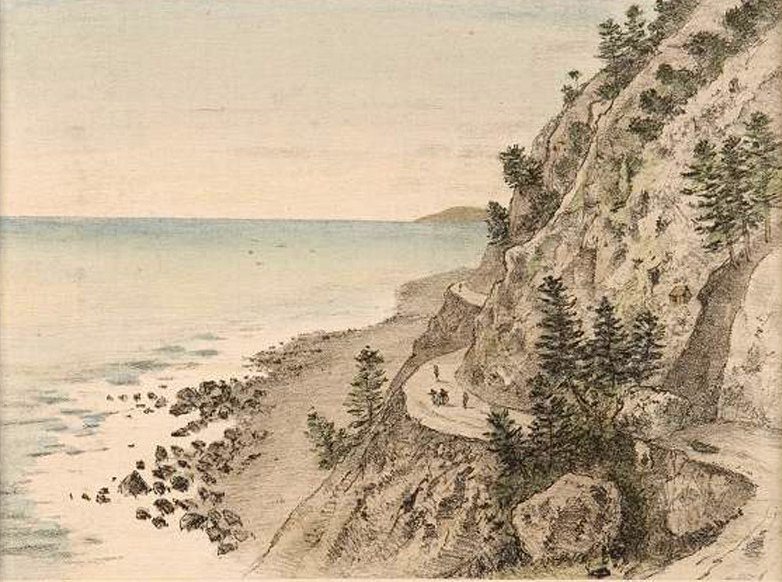
To get to Zoogata from Sakata, you must pass through the foot of Mt. Chokai, which rises north of Sakata, and cross three mountain passes.
Mount Chokai is a rare mountain that sets up directly from the Sea of Japan, and is a sudden cliff along the coast. At that time, the roads were built just before the sea, and depending on the weather, they were extremely dangerous.
Also, on the border with Akita Prefecture are three capes made of lava caused by the eruption of Mt. Chokai ( Kannonzaki, Daishizaki, and Fudozaki ), and although they are not very high, this mountain pass is also known as a difficult area.
Although he was a healthy person, for the middle-aged Basho, he had a great deal of determination, but the place he wanted to go that he had to go to, saying that he had "doed the number of scenery on the elephant mountains and land, and now he was guilty of the height of the elephant lagoon" (he had seen countless beautiful scenery of rivers, mountains, and seas and land, but now it was a stir when he thought he could see elephant lagoon).
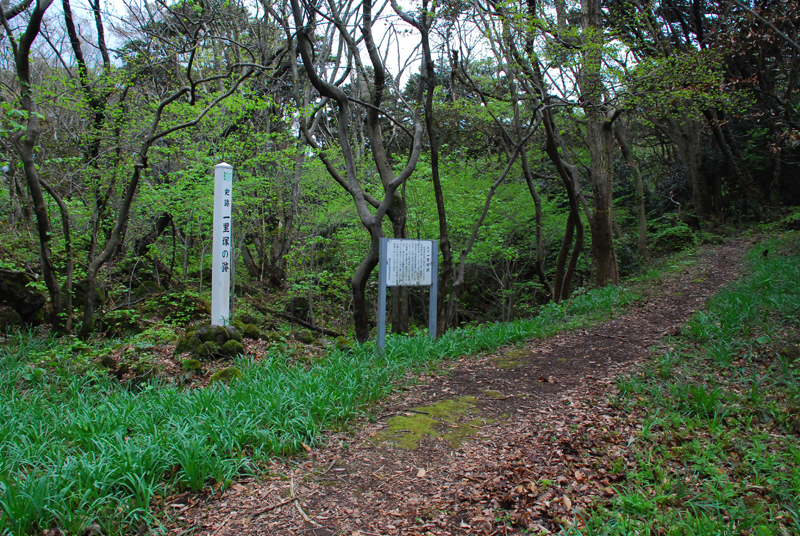
The group departs from Sakata in the morning and arrives in Fukiura (Fukura/Yusa-cho, Yamagata Prefecture), just before Mt. Chokai, in the afternoon. The weather was heavy, so I had to stay in Fukiura for one night and waited for the weather to recover. But it rained the next morning too. However, Basho, who wants to go to Zogata early, forces to leave.
Due to a storm, I was forced to temporarily evacuate to a ship hut at the unresolved Seki, which is said to have been on the prefectural border along the way, but somehow managed to reach Zhougata that same day.
Misaki Old Road <Information>
- Facility name: Misaki old road (Misaki Park)
- Location: Kosagawa Misaki, Zogata-cho, Nikaho City, Akita Prefecture
- Phone number: 0184-43-6608 (Nikaho City Tourism Association)
- access:
- Public transportation: Approximately 15 minutes by car from JR Uetsu Main Line Zogata Station
- Car: Approximately 15 minutes from Nihonkai-Tohoku Expressway Zogata IC
Google Map
Basho expressed the beauty of Kogata by comparing it to the unparalleled beauty of ancient China.
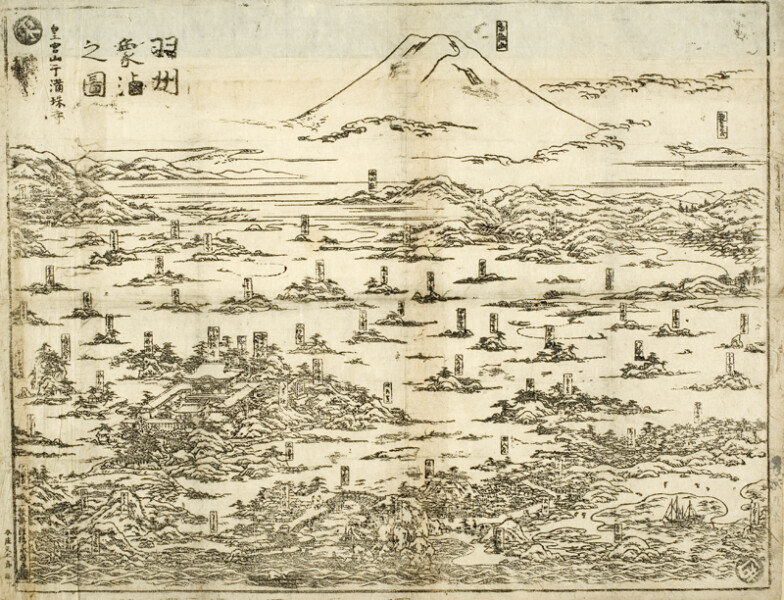
Shiokoshi Village where Elephant Gallery is located , we visited the Notoya where we had planned to stay, changed clothes and ate udon, and even though it was still raining, we headed out to visit the Elephant Gallery and Kujukushima.
traveled to Noin Island , where Noin, who liked Elephant-gata, spent three years
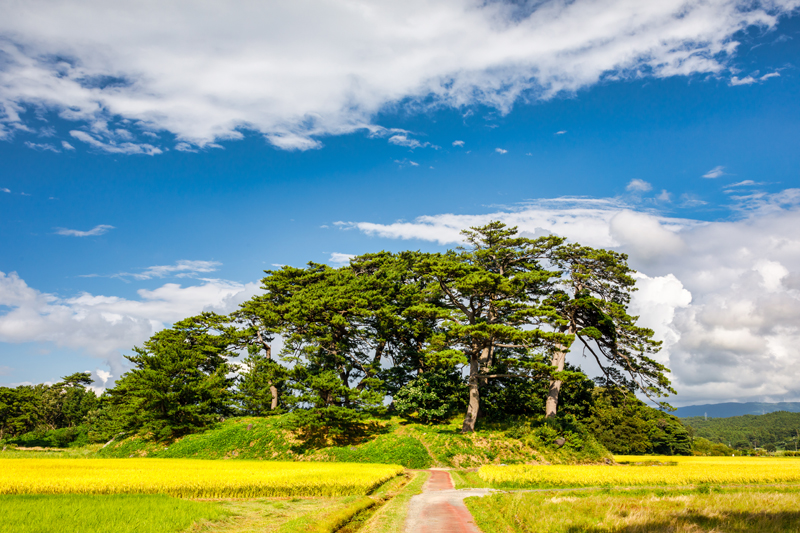
Basho and his friends return to Notoya, but it is a festival in Shiokoshi and there are no rooms available, so they stay at an inn called Mukaiya. It started raining the next morning, but the weather gradually cleared Kanmanji Temple.After dinner, we took a boat trip around the bay and enjoyed the scenery to the fullest. The next day, June 18th, I returned to Sakata.
Basho wrote several poems inspired by the scenery of the Kujukushima Islands. among them
“Nemu flowers bloom in the rain and in the rain”
Basho depicts the beauty of zogata by comparing it to a time in ancient China where there was an unparalleled beauty named Seishi, and the king fell in love with her appearance and ended up destroying the country. Matsushima had a bright, sunny scenery that seemed to be smiling, but Kogata also wrote that it had a dark, melancholy atmosphere, as if someone was holding a grudge.
Basho Kuzogata and witnessed the scenery that Basho had seen. I raved about it inside.
The Kurogata earthquake completely turned the sea into land in one day
Twenty years after Masumi Sugae's visit, on July 10, 1804 (solar calendar), an earthquake with a magnitude of 7.0 (estimated) struck the Kurogata region. Kujukushima's landscape completely changed in one day. The Kujukushima Islands, which used to float in the sea, have now become small mountains scattered on land.
The land of Elephant Cave will rise about 2m due to an earthquake. The shallow seas dried up and turned into a reclaimed area.
Although Zoogata was devastated by this earthquake, the Honjo domain, which is located in Zoogata, quickly puts effort into reconstruction. The village was given temporary loans from the Edo Shogunate, and began reviving the village and clearing up raised land. Records from 1846, about 40 years after the earthquake, state that " where it was a lagoon has become a rice field, " and rice fields were spread out in the area that was a Kujukushima Island.
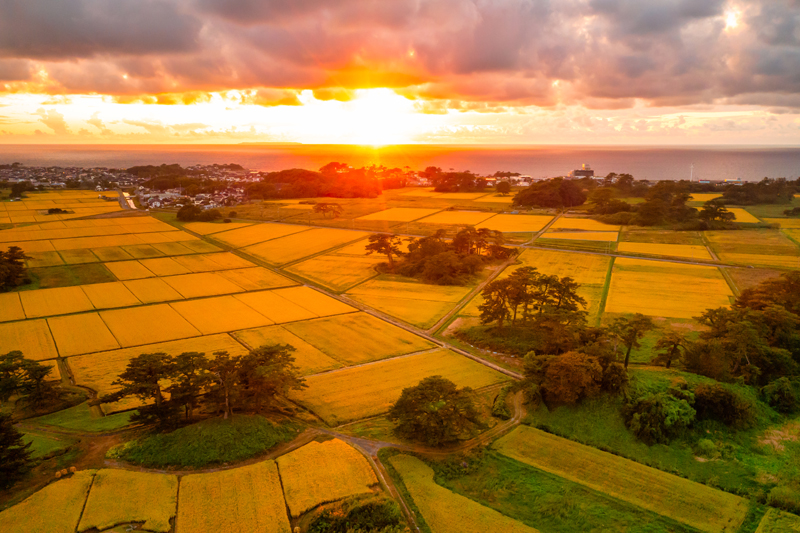
Kujukushima (Zogata) <Information>
- Facility name: Kujukushima (Kujigata)
- Location: Shioyakijima, Zogata-cho, Nikaho City, Akita Prefecture
- Phone number: 0184-43-6608 (Nikaho City Tourism Association)
- URL: Kujukushima (Kujukushima)
- access:
- Public transportation: Approximately 15 minutes on foot from JR Uetsu Main Line Zogata Station
- Car: Approximately 8 minutes from Nihonkai-Tohoku Expressway Kogata IC
Google Map
Kakurin, who risked his life to protect the scenery of Kujukushima, Kuzugata

The Honjo Domain was probably a nuisance that was an island, and the Koyama was in the way. We will collapse the mountains and proceed with cultivation.
However, those who can't forget the scenery of Kujukushima, where the islands appear on the surface of the water, disputes this policy. Kakurin , the 24th head priest of Somanji Temple , has issued petitions to the domain many times because Somanji Temple has been keeping Zhougata as a temple territory since ancient times, but his wish was not accepted.
Kakurin comes up with a plan. If Kaman-ji Temple becomes a temple connected to the imperial family (the emperor and the imperial family), the domain will not be able to interfere with the Kujukushima Islands, which are temple territory. As a result of various efforts, they succeeded in making Kanmanji a prayer place for the Kaninnomiya family, and forced the domain to stop demolishing the small mountain.
However, the domain was furious at Kakurin's actions and was chased for violating the domain's orders. Feeling danger, Kakurin escapes to Ueno Kaneiji Temple (Taito-ku, Tokyo) in Edo, but is found and is taken back to Honjo and placed in prison.
Kakurin died in 1822 while still in prison. Thus, the landscape of Kujukushima remained in the present day in exchange for the death of Kakurin.
Soumanji Temple <Information>
- Facility name: Kamanji Temple
- Location: 2, Hirogatajima, Higuta-cho, Nikaho City, Akita Prefecture
- Phone number: 0184-43-3153
- Admission fee: General 300 yen, high school students 150 yen, elementary and junior high school students 100 yen
- Visiting hours: 8:00-17:00
- URL: Kamanji Temple
- access:
- Public transportation: Approximately 15 minutes on foot from JR Uetsu Main Line Zogata Station
- Car: Approximately 8 minutes from Nihonkai-Tohoku Expressway Zogata IC
Google Map
``Nikaho City Local Museum'' exhibits historical materials and old drawings of Kurogata
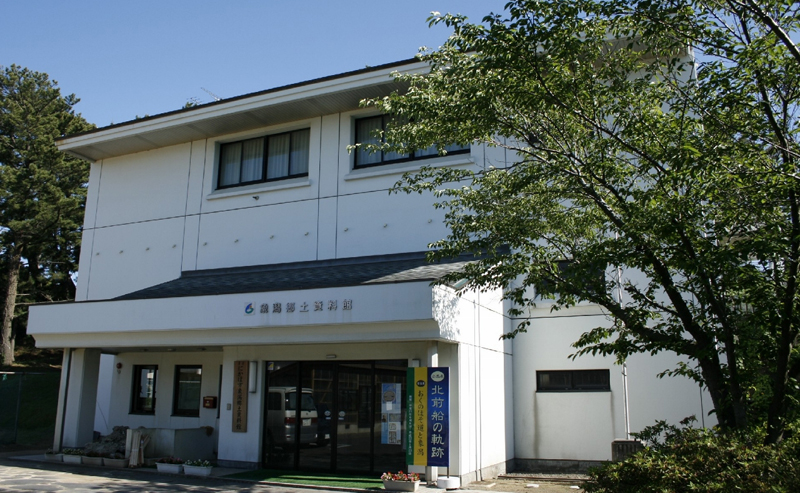
The Nikaho City Zhougata Local Museum shows the Kujuku Islands, which had become completely different landscapes due to the Zhougata earthquake, with a folding screen painting " Paper-colored Elephant-Gata Folding Screen ," depicting the Kujuku Islands before the uplift, and a model reproduced in one-825th.
It also displays related materials for Matsuo Basho's "Okuno Hosodo," as well as information such as Shiogoshi Port, which flourished as a port of call for Kitamae-fune (a merchant ship that made great business travelling between Tohoku, Hokkaido and Kansai) from the Edo to the Meiji period.
Nikaho City Zogata Local Museum <Information>
- Facility name: Nikaho City Zogata Local Museum
- Location: 31-1 Kitsunemori, Zogata-cho, Nikaho City, Akita Prefecture
- Phone number: 0184-43-2005
- Opening hours: 9:00-17:00
- Closed: Mondays, the day after national holidays and substitute holidays, year-end and New Year holidays (December 29th to January 3rd)
- Admission fee: General 150 yen, high school and other students 100 yen, elementary and junior high school students 50 yen
- URL: Nikaho City Zogata Local Museum
- access:
- Public transportation: Approximately 3 minutes by car from JR Uetsu Main Line Zogata Station
- Car: Approximately 3 minutes from Nihonkai-Tohoku Expressway Zogata IC




![[Chokaisan and Tobishima Geopark: Nikaho Edition (1)] Kujukushima, which is known alongside Matsushima, was landed in a major earthquake. 1999 Island Winter 1_Nikaho City Tourism Division](https://jp.neft.asia/wp-content/uploads/2024/10/9832b69b3165ff52241c17ad3f8bf591-150x150.jpg)
![[Serialization: Following the narrow road in the back part 7] The journey is finally coming to an end, from Dewa to Uzen, and then to Hokuriku Oku no Hosomichi 7](https://jp.neft.asia/wp-content/uploads/2023/10/ef46a9f4e23d51f52518cd66fade3cd6-1-150x150.jpg)
![Shirase Antarctic Exploration Team Memorial Museum, a museum with the footprints of Antarctic Explorer Shirase-Yao, [Nikaho City, Akita Prefecture] Shirasewan](https://jp.neft.asia/wp-content/uploads/2018/03/Nobu_Shirase-150x150.jpg)
![[Chokaisan and Tobishima Geopark: Yusa and Sakata Edition] Shonai Hirano is moist with the blessings of Mt. Chokaisan b5339749745ac9c7a01a8bb8dc81755e](https://jp.neft.asia/wp-content/uploads/2023/05/b5339749745ac9c7a01a8bb8dc81755e-150x150.jpg)
![What is the roadside station, Ezogata Nemunooka? Introducing popular spots with a rating of 4.0 based on Google's reviews [Nikaho City, Akita Prefecture] 4001116_m](https://jp.neft.asia/wp-content/uploads/2021/12/4001116_m-150x150.jpg)
![[Chokaisan and Tobishima Geopark: Nikaho Edition (2)] Coexistence with nature brought about by the wisdom of our ancestors 1 Nikaho Plateau 2000 Nikaho City Cultural Property Protection Division](https://jp.neft.asia/wp-content/uploads/2024/10/28389310d744abdc1b4ca5d863e123e7-150x150.jpg)
![[Third] Sugae Masumi walked in the Oga Peninsula - Encountered a major earthquake [Akita Prefecture] 1. Oga's Cold Wind - Namahage Prefectural Expo](https://jp.neft.asia/wp-content/uploads/2024/10/7154afaf7fcdc00890442af025f9b4d1-150x150.jpg)
!["Negaseki" is one of the three ancient Oshu sekies that surpasses Minamoto Yoshitsune and Matsuo Basho [Tsuruoka City, Yamagata Prefecture] 3809167_m](https://jp.neft.asia/wp-content/uploads/2023/02/3809167_m-150x150.jpg)
